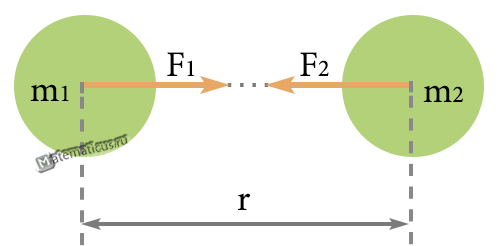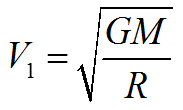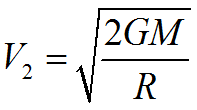The law of universal gravitation was discovered by Isaac Newton in 1867.
Gravitational force is the force with which material points of different mass and distance from each other are attracted to each other along a straight line connecting their centers of mass, figure below.

The wording of the law of universal gravitation:
Any two material points of mass m1 and m2 are attracted to each other with a gravitational force F inversely proportional to the square of the distance between the centers of the objects r2.
Formula for determining the gravitational force:

F — gravitational force;
m1 — mass of the first object;
m2 — mass of the second object;
r — distance between bodies.
The value of the gravitational constant is established experimentally (for example, the experiment with Cavendish torsion weights), denoted G and is equal to 6.67·10-11 m3/kg·s2
The law of universal gravitation is used to explain the tides, tides, the mass of planets, the movement of artificial satellites In orbit.
The first cosmic speed is 7.9 km/s and is determined by the formula:

The second cosmic speed is 11.2 km/s and is based on the formula:

M is the mass of the planet Earth, M≈5.97×1024 kg;
R is the radius of the planet Earth, R≈6371 km
At the first cosmic speed, the orbit is circular; at the second, it is parabolic. The second cosmic velocity, in fact, describes the minimum speed necessary to overcome the gravitational attraction of a celestial body.
